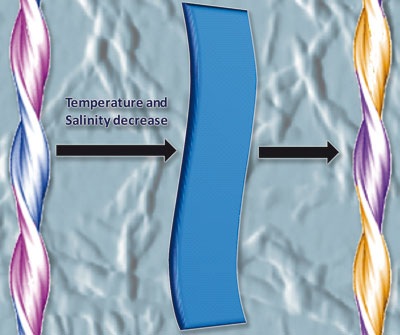
Posted on 02/20/2010 10:54:33 AM PST by neverdem
Spontaneous refolding of amyloid fibres under mild conditions could provide insight into Alzheimer's disease claim scientists in the US.
Amyloids are collections of twisted or misfolded proteins and often develop in the brains of people with a number of neurodegenerative diseases, including Alzheimer's and Parkinson's. They have been considered to be the most thermodynamically stable form of protein as very harsh conditions are required to disrupt them. But Igor Lednev and his team at the University of Albany have found amyloid fibres change from one polymorph to another with just mild changes in solution temperature and salinity.
Lednev hopes this discovery will provide insight into treating neurodegenerative diseases as the biological activity and toxicity of amyloid fibres are determined by their specific polymorph form. 'If we can control the polymorph structure, we might be able to control the toxicity,' he says.

|
Protein fibres spontaneously refold under mild environment changes
|
The discovery was made using Lednev's homebuilt apparatus and a method based on deep ultraviolet resonance Raman spectroscopy (DUVRR), which is very sensitive to protein secondary structure and allows study of the gelatinous, highly light scattering suspensions that insoluble amyloids produce. He says they are perhaps the only group in the world using this technique to study fibre formation.
Several techniques including DUVRR, atomic force microscopy and hydrogen-deuterium (H-D) exchange experiments, were then used to observe the mature fibres' core structure partially melting and spontaneously refolding when they are transferred from a saline environment at 37 °C to a salt-free solution at 25 °C. The H-D experiments also importantly suggest that the core is not exposed to the solution during refolding, implying it occurs without disintegration, adds Lednev.
Filip Meersman, who researches protein folding and amyloids at the Catholic University of Leuven, Belgium, finds the work interesting and guesses that this transition 'would likely occur as a function of time as well.'
Lednev says he believes their combination of DUVRR and H-D exchange could be applied to other fibre polymorphs whose ability to refold might not be easily evident using other techniques. Next the team hope to investigate and understand the phenomenon further. 'Only clear understanding of the mechanism might lead us to a new approach for potentially regulating the biological activity of amyloid fibres,' says Lednev.
Amyloid fibrils are  alive
alive : spontaneous refolding from one polymorph to another
: spontaneous refolding from one polymorph to another
Dmitry Kurouski, William Lauro and Igor K. Lednev, Chem. Commun., 2010
DOI: 10.1039/b926758a
Instant insight: Alzheimer's: untangling the facts
Cures for Alzheimer's may come from understanding its chemistry. Arvi Rauk examines the disease at the molecular level
Fresh hope in battling Alzheimer's disease with three-pronged attack
ping
Exciting new research into one of the basic problems in diseased brains.
Exciting new research into one of the basic problems in diseased brains.
Thanks for the ping Texas Booster!
Please...hold the applause.
THANKS.
I was doing over 25k-35k PPD but it was not doing any good for my electric bill :-(
The new generation of 32 nm chips is looking like a real winner in points/watt. You can send us your old video cards when/if you upgrade to new toys.
Please feel free to restart when you can with team 36120.
It WILL keep the computer room a few degrees warmer than it would be otherwise!
What's that?! Mis-folded proteins cause liberalism??
BTTT
Cheers!
Thanks!
Disclaimer: Opinions posted on Free Republic are those of the individual posters and do not necessarily represent the opinion of Free Republic or its management. All materials posted herein are protected by copyright law and the exemption for fair use of copyrighted works.